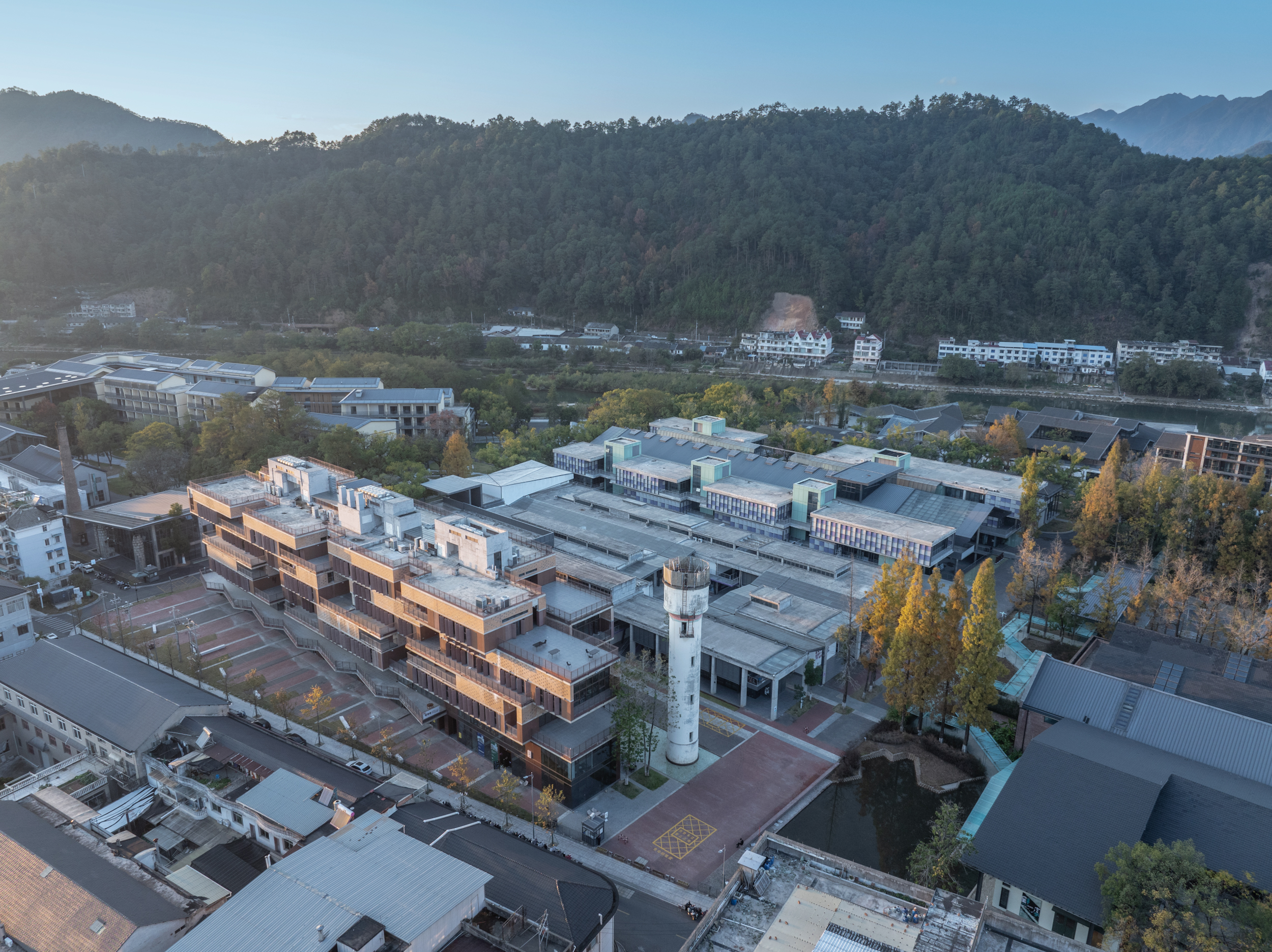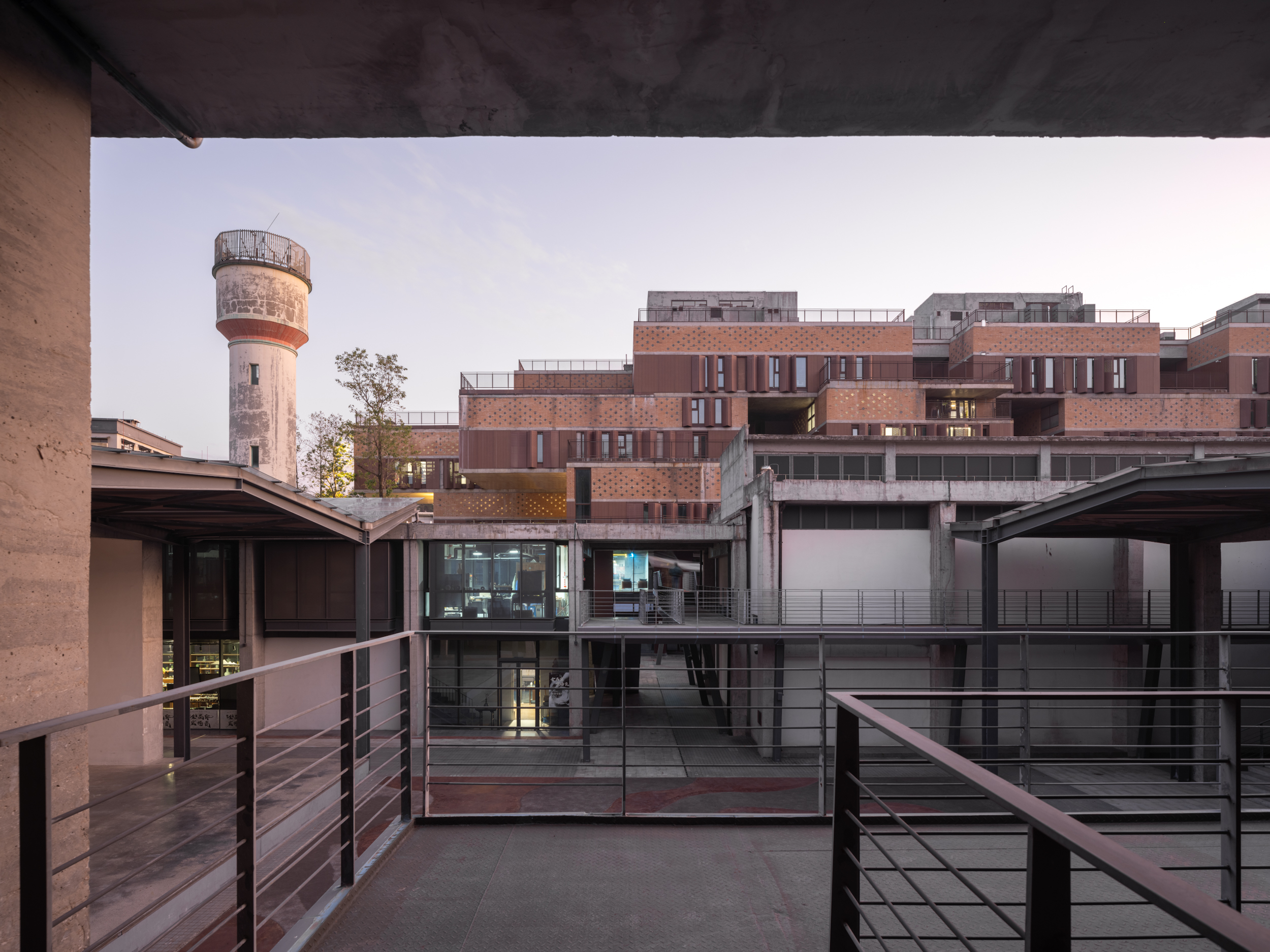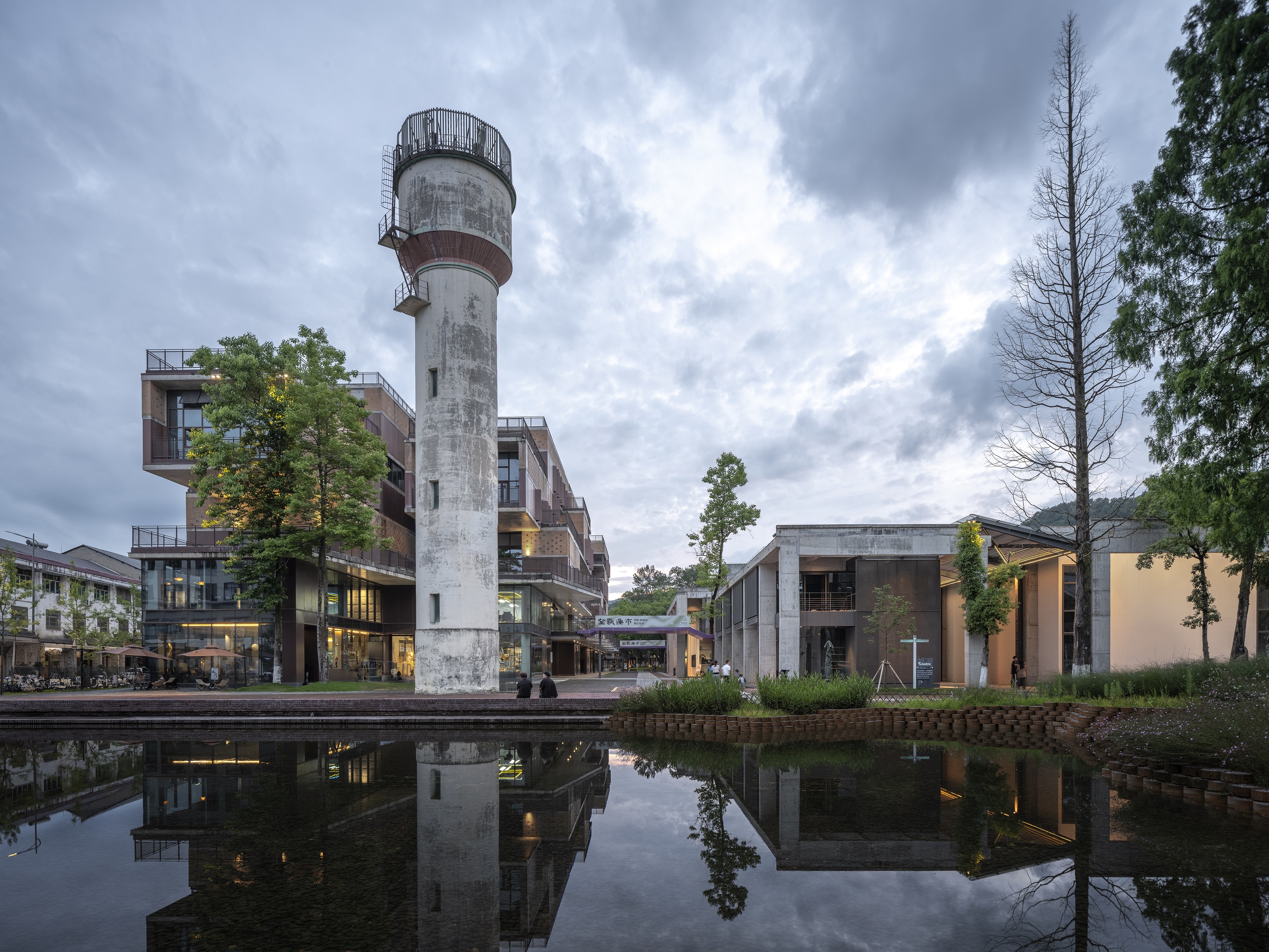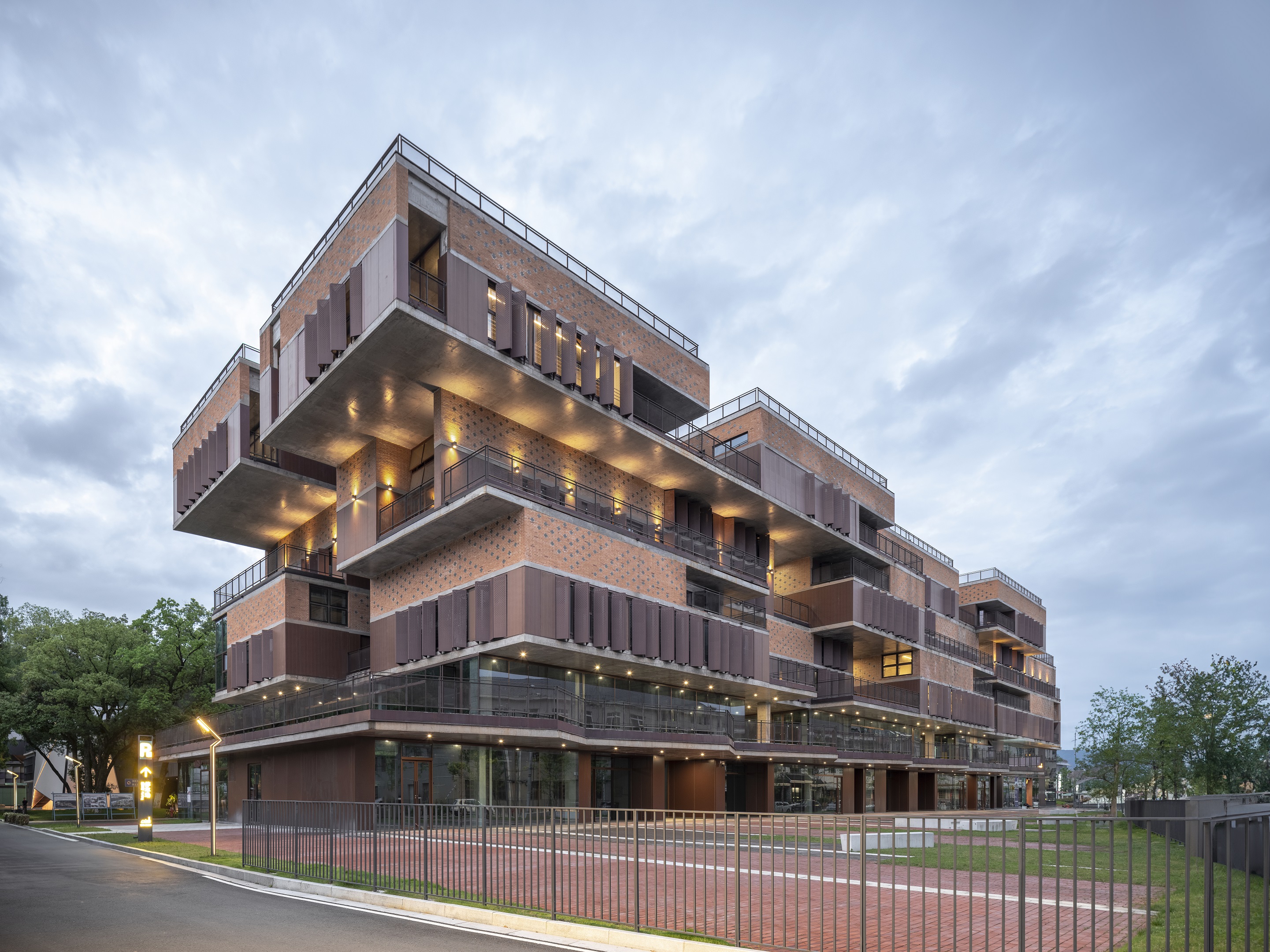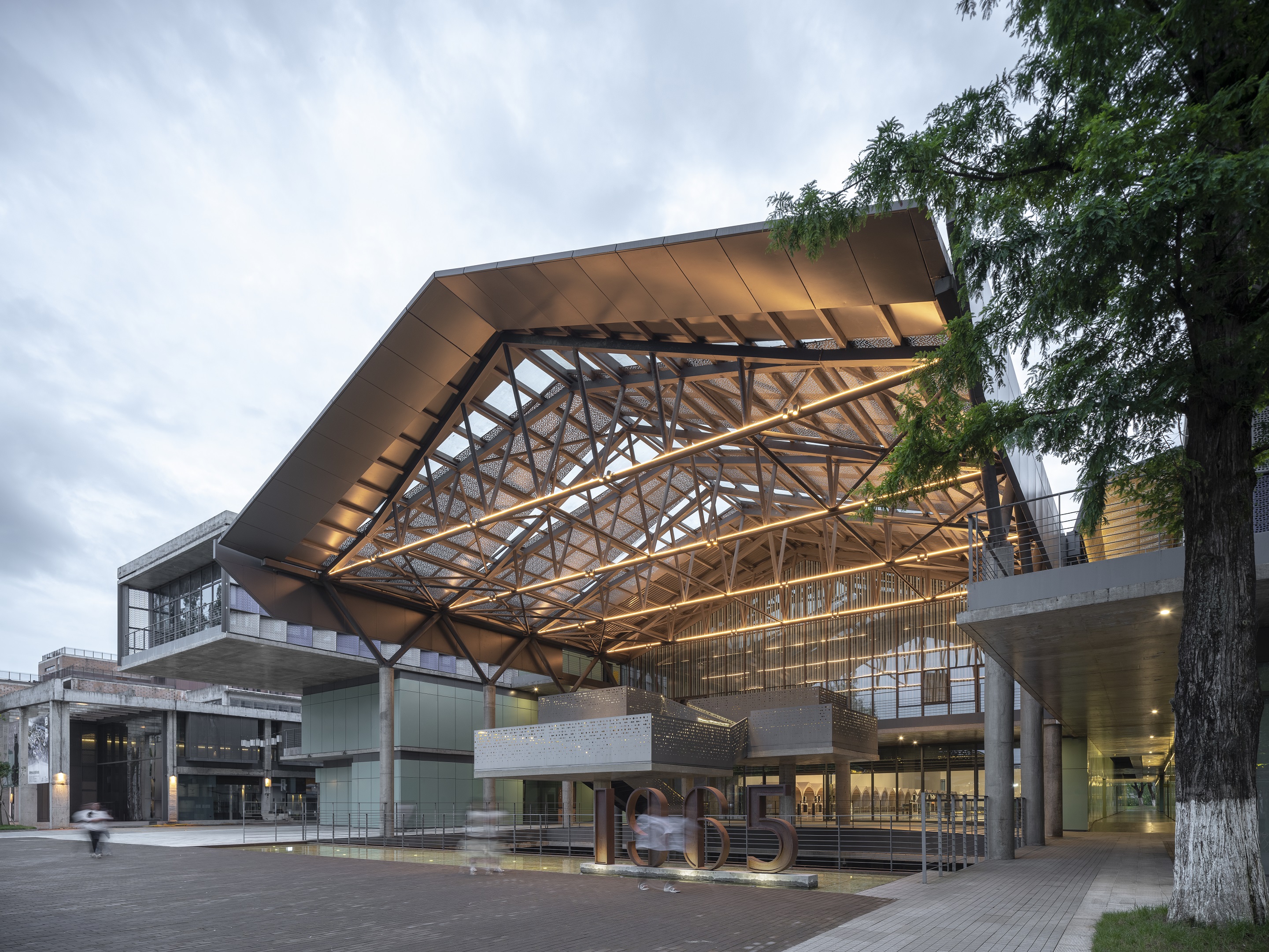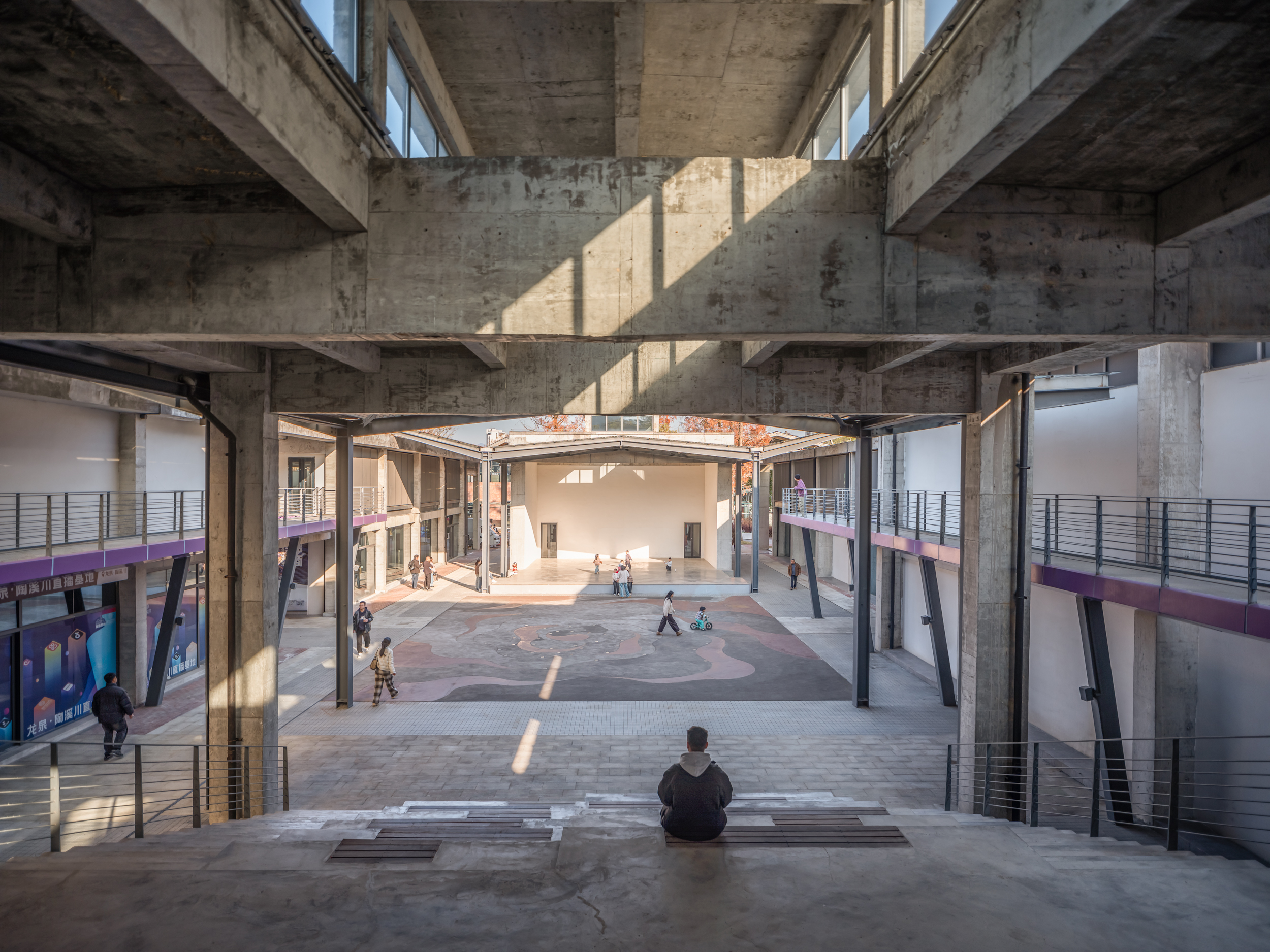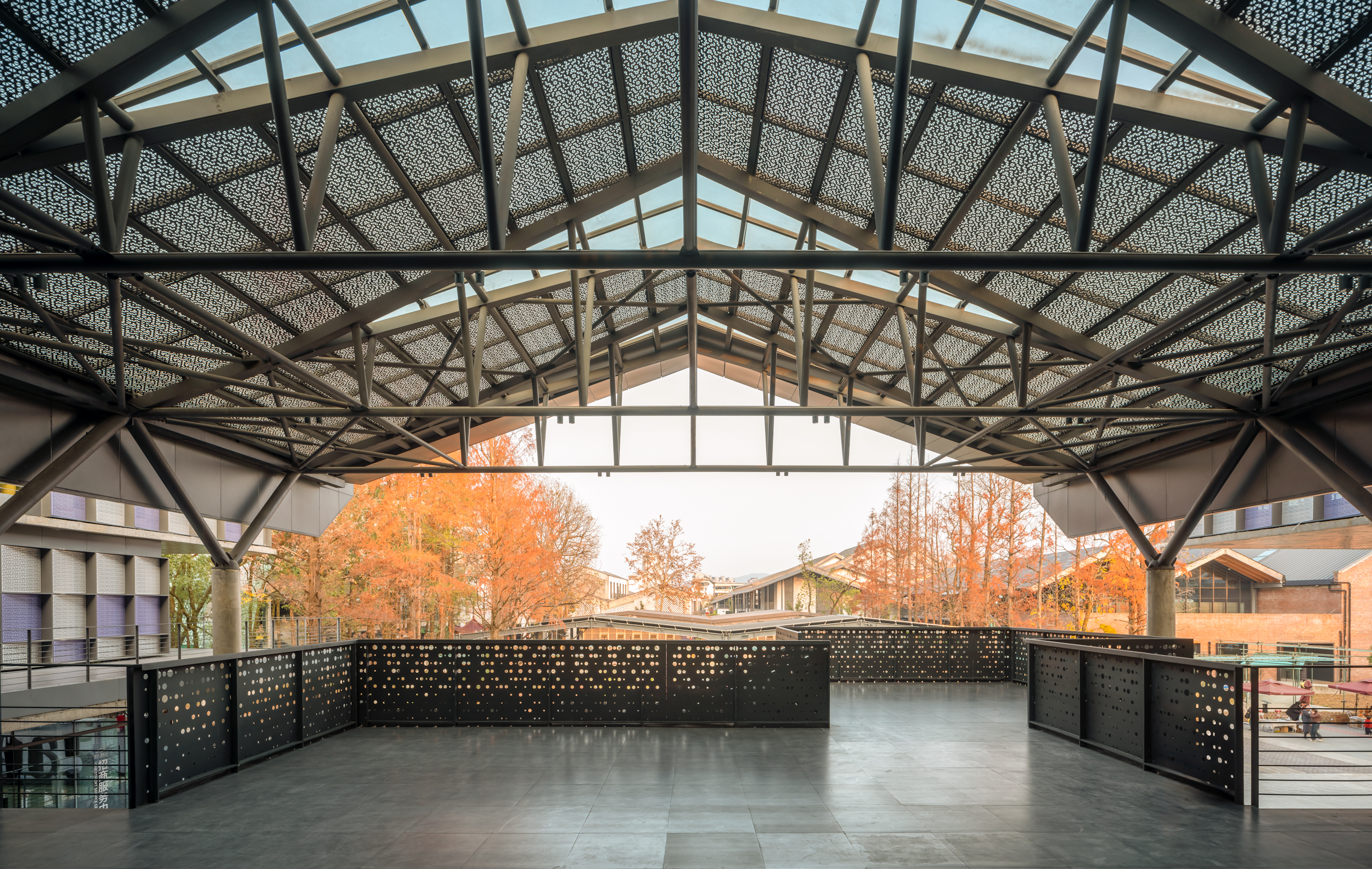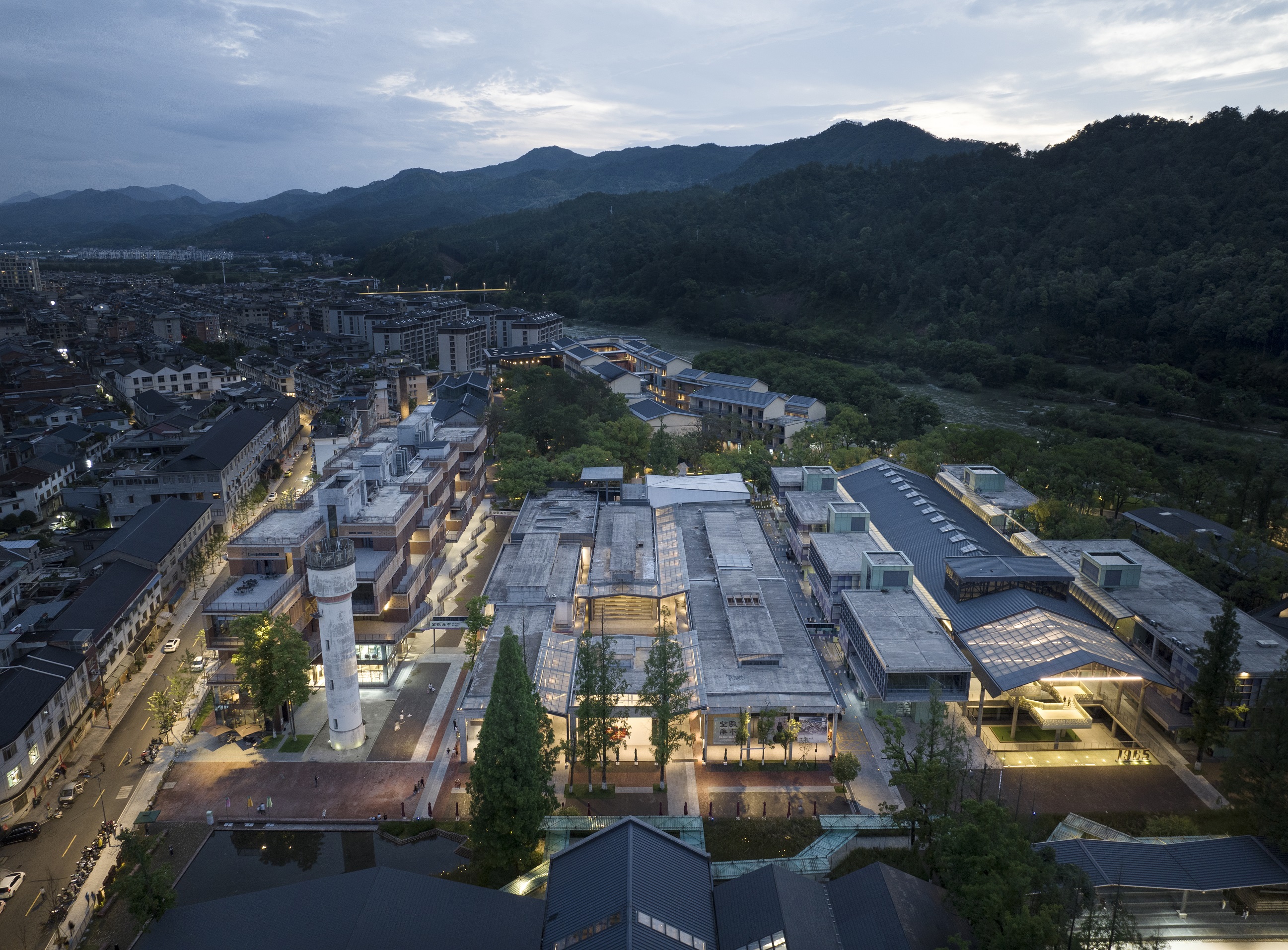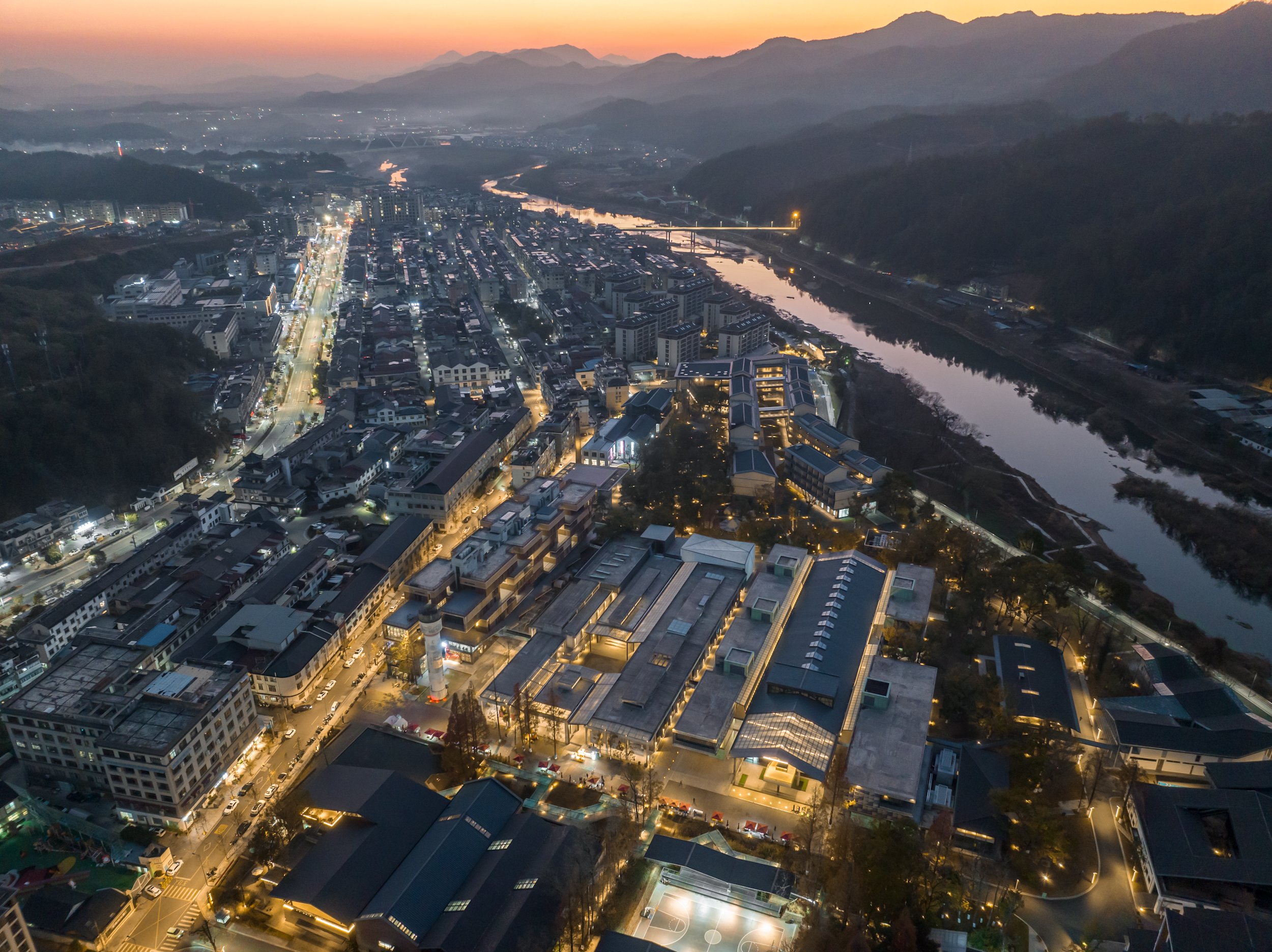SHORT DESCRIPTION
Wangou Art Avenue transforms a century-old military-industrial site on the western edge of Longquan’s old town, Zhejiang Province, into a vibrant, mixed-use cultural district. With its legacy of fragmented factory buildings, the site is redefined as a key platform for cultural regeneration and public engagement. Adopting a renovation-first strategy, the design preserves the original spatial rhythm and structural integrity of the former factory complex. Through the approach of “Textural Memory + Spatial Interweaving,” new architectural insertions—elevated walkways, nested volumes, platforms, and permeable courtyards—connect previously isolated buildings into an open, flowing network. This system of connections significantly enhances functional integration and user circulation, enabling seamless transitions between exhibition halls, studios, offices, retail spaces, and leisure zones. The improved accessibility and spatial logic support both daily use and large-scale cultural events with efficiency and flexibility. Interstitial grey spaces are transformed into vibrant nodes of civic and artistic activity, while preserved mature trees introduce natural scale and comfort. A clustered, vertically layered layout ensures clear zoning and cross-program interaction, anchored by a continuous second-level circulation spine. By uniting heritage structures with contemporary interventions, Wangou Art Avenue establishes a resilient framework for mixed-use urban life—demonstrating how industrial renewal can unlock spatial value and catalyze inclusive transformation in smaller cities.

